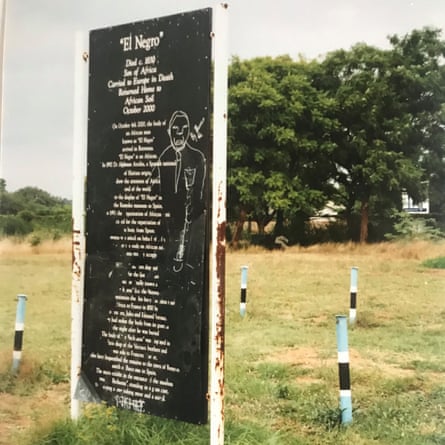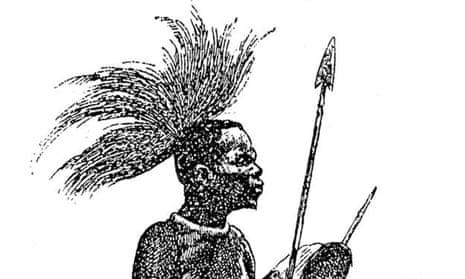For more than a century, the stuffed body of an African man was displayed as a grotesque exhibit in European museums. His body had been stolen from his grave by a pair of French taxidermists who dug him up in the dead of night and had him shipped to France, along with a collection of similarly preserved animals.
In 2000, following a vociferous campaign for common decency to prevail, the man’s remains were reburied in African soil.
Except, it transpires, it was the wrong African soil. While the man who became known as El Negro was “returned” to Botswana, where he supposedly died, new research suggests he should have been interred in South Africa.
According to Frank Westerman, a Dutch journalist and author, he actually died near Cape Town. Westerman became fixated on discovering more about the man after seeing him in a Spanish museum more than 30 years ago and feeling what he later described as “a diffuse sense of shame”.
A cutting from Le Figaro confirms that the man was first laid to rest “among the Hottentots of the Cape”. The paper reported that he was “ill, exhausted, and no longer able to run after lions and antelopes” when Jules and Édouard Verreaux arrived in the village where he died.
Westerman’s research, published last week in a revised edition of his book El Negro and Me, indicates that the most northerly place the brothers visited was Tulbagh, 62 miles from Cape Town as the crow flies. Tulbagh is more than 620 miles from Gaborone, the capital of Botswana, where the unknown man was given his final resting place.
As he traced how the man had ended up as a macabre curiosity, Westerman discovered that, having attended his funeral in 1831, the Verreaux brothers dug up the man’s body and had him stuffed, mounted and shipped back to France.

As late as 1872 the man was recorded as being on display at a fair in the Palais d’Industrie in Paris. But some time between 1880 and 1888 he was sold to a veterinary surgeon and collector, Francisco Darder, from Barcelona. For much of the 20th century he was exhibited as “Bushman of the Kalahari” in the Darder museum of natural history in Banyoles at the foot of the Catalan Pyrenees.
There his revealing loincloth was replaced with a less revealing orange covering. Westerman records that his skin was given a layer of shoe polish to make him appear blacker. In the run-up to the 1992 Barcelona Olympics there were calls to have him returned to Africa, because black athletes would find the display offensive.
A campaign, fiercely resisted by the Catalan authorities, was backed by Jesse Jackson, the pastor, Magic Johnson, the basketball player, and Kofi Annan, who was assistant UN secretary-general at the time.
The man was eventually reburied in Botswana in 2000. Even this act of consecration brought further indignity, however. The man’s spear was left behind in Banyoles, his skin in Madrid. By 2004, his grave lay largely neglected. The black, white and blue decorative poles around it were used by footballers as goal posts.
It was not until 10 years later that the lonely burial site was refurbished. A hedge was planted around the ornamental fence, a tree stump and some pebbles now mark the grave along with a new signboard.
Now, following Westerman’s latest discovery, it is inevitable that there will be calls for him to be buried a third time. However, the journalist urges caution. “This is not the end of the story,” he told the Observer. “It’s an open wound. It would be wrong of us to hastily dig up his body again until we can really pinpoint the place where he died.”
